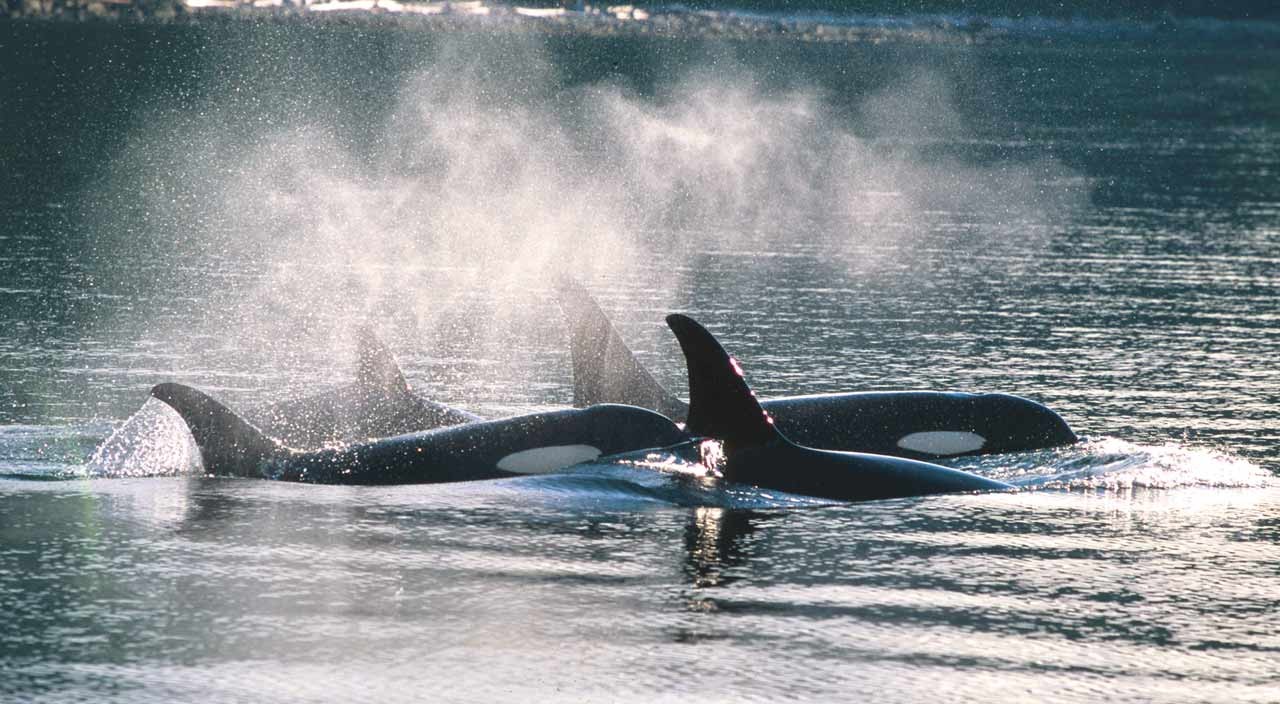Biologically rich waters, teaming with life, make the coast of British Columbia & Alaska a hot spot for whales and dolphins. From spring through the fall these coastal waters experience blooms of plankton and krill, schools of herring and other small fish, and returning runs of salmon. These rich food sources inspire migrations the length of the continent, as humpback and grey whales return to feed each year, and foster families of killer whales who seasonally reside near shore to feast on salmon.
Off the coast of BC there are 25 different species of whales and dolphins. While some remain elusive and far from shore, near the edge of the continental shelf, others inhabit inshore waters where we are able observe them on a regular basis. Some of these include:
- the small and shy harbour porpoise,
- bow-riding Dall’s porpoise,
- 80-foot-long, inshore fin whales,
- mammal eating (transient/Bigg’s) killer whales, fish eating (resident) killer whales, and shark-eating (offshore) killer whales,
- pacific white-sided dolphins, and
- humpback whales
It is possible to witness spectacular events here.
Humpback Whale Bubble Net Feeding
One such event is when a group of humpback whales comes together in unison to group bubble-net feed. This is a culturally taught technique that takes coordination and timing, as one whale blows a net of bubbles under a school of small fish others will circle to frighten the fish inward, and together they push the school into a ball to the surface of the water. On queue, from one whale making feeding calls, these whales together break the surface of the water, side by side, mouth agape, to gorge on the fish they’ve caught in their net of bubbles. A bubblenetting group can contain from 4 to 20 whales. If you can imagine the massive spectacle of ten school-bus-sized whales rising out of the ocean with their mouths agape, you have an inkling of how incredible this is to witness.
Killer Whale (Orca) Families
Known to be found in every ocean of the world, killer whales, on the coast of BC are the most well-studied cetacean in all the world.
Beginning in the 1970s these studies quickly taught us that each individual is recognizable by way of photo-identification of the fin on their back, the dorsal fin. This realization then allowed researchers the ability to catalogue individuals and soon understand their intricate social structure. These large dolphins exhibit strong family bonds, centered around the eldest female, the matriarch. While viewing resident fish-eating killer whales it is often very clear to see these bonds as adult sons are found travelling with their mothers their entire lives.
Travelling the BC and Alaskan coast is sure to be filled with many marvels, one of which is likely to be incredible encounters with these magnificent leviathans. Each species, with unique behaviors, will inspire questions and the imagination. Their world beneath the waters surface lends great mystery about their lives, as we wait patiently for them to surface and grace us with their presence.
